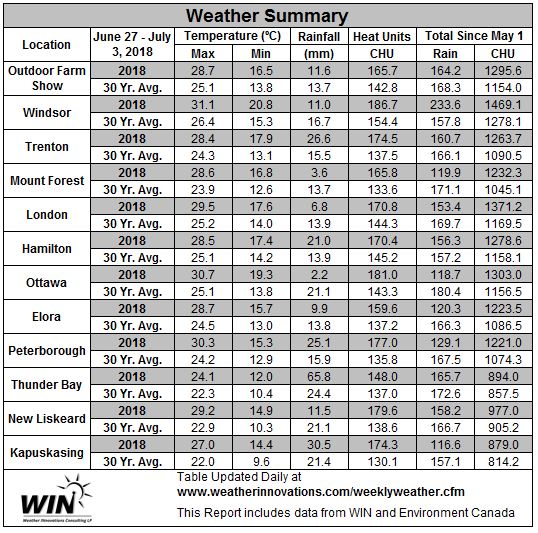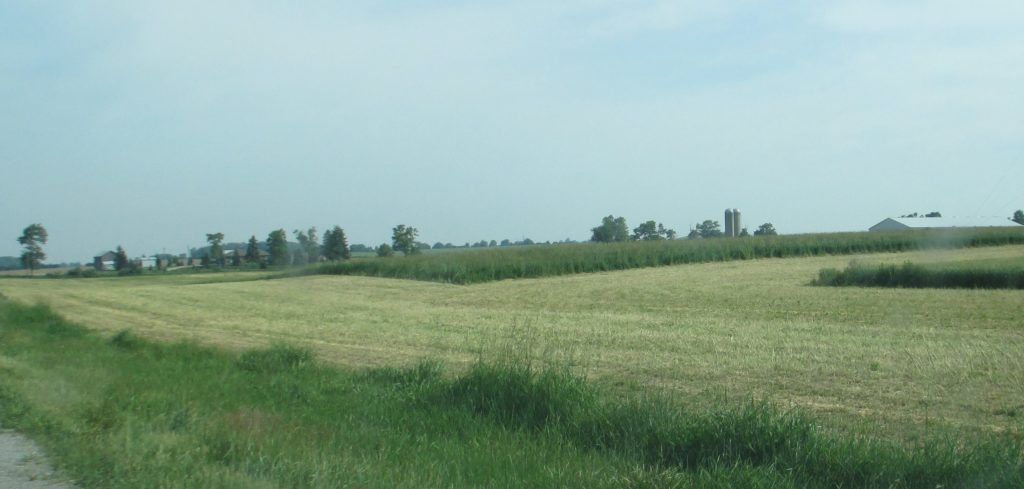Hay Cutting Height is a Management Tool
Challenging growing conditions in 2016 and 2017 have weakened mature hay fields and put pressure on stands established during those years. When forages have been stressed it is a good time to think about how management practices can affect persistence and vigour. Cutting height is one factor that can make a difference in the longevity of a perennial forage crop.
Grasses are not as tolerant of low cutting heights as alfalfa. Hay fields containing grasses should not be cut shorter than 7.5 cm (3 inches). Under good conditions, alfalfa persistence is not affected by mowing as close as 2.5 cm (1 inch), but when the stand is stressed raising the cutter bar can benefit the plants. Research from Wisconsin by Daniel Wiersma (2000) suggests that raising the cutter bar from 5 – 15 cm (2 – 6 inches) reduces the total alfalfa yield per hectare by 0.44 tonnes/cm (yield per acre by 0.5 US ton/inch) over the growing season; other studies had similar findings. Work on how cutting height affects alfalfa quality has more mixed results: while the lower portion of a plant is less digestible, some studies found the added yield meant there was no difference in milk production per acre at different cutting heights.
Raising the cutting height improves regrowth
Cutting is a stressful event for forage crops. Without their leaves, forages are unable to photosynthesize the sugars they need to regrow. Instead, these crops must draw on carbohydrates stored in their roots for the energy required to grow new leaves. As those carbohydrates are used up, the root system dies back. Once the plants have enough leaves to produce more sugar than they require for regrowth, they send the excess to the roots to replenish their energy stores. Usually this takes at least four weeks, although the process is highly dependent on weather conditions: without enough rain, recovery takes longer.
By raising the cutting height to 10 cm (4 inches), some of the lower leaves are left behind. These leaves allow the forage plants to photosynthesize sugar right away. Since this lessens the demand on the plants’ root reserves, full recovery can happen faster (Figure 1). Allowing a full recovery between cuts maintains plant vigour and can improve persistence over time. This is particularly important for alfalfa under aggressive cutting schedules and any type of perennial grass.

Figure 1. Hay fields containing grasses should not be cut closer than 7.5 cm (3 inches). If the field looks like wheat stubble after it has been harvested, the cutting height should be raised.
Raising the cutting height reduces contamination
Low cutting heights increase the risk of contaminating the feed with soil. Cutting hay closer than 7.5 cm (3 inches) increases the risk of scalping a field and throwing soil onto the cut forage. Taller stubble also reduces the amount of dirt getting into the feed by holding the swaths off the ground. As an added benefit, taller stubble reduces drying time by allowing more air to circulate under the swath. It also prevents the swath from drawing up moisture from the soil.
Ash is the total amount of minerals in a forage sample. The average ash content for alfalfa is 6-8%, while for grasses it is typically 4-6%. Ash content exceeding these numbers indicates soil in the feed. Since soil is not digestible, high ash content reduces total digestible nutrients and devalues a forage crop.
Soil is full of bacteria, and some of them can contaminate haylage and baleage. Silages that develop an earthy smell usually have a high pH and have been spoiled by heat-loving Bacillus growth that has reduced the energy content of the feed. Botulism is caused by a soil borne bacteria called Clostridium botulinum, which produces a toxin that affects the nervous system and can cause paralysis and death. Silage contaminated with other Clostridia bacteria is often high in butyric acid, low in energy, and unpalatable. Clostridia can cause putrid, fishy-smelling silage. These types of silages also pose a high risk of contamination by Listeria, which can cause abortions and death. Listeria is particularly dangerous for sheep. Due to the animal health risks, spoiled silages should not be fed.
In Summary:
Growers can improve crop regrowth by raising the cutter bar when making hay or haylage. Leaving more stubble behind has the added benefit of reducing soil contamination in the feed. Increasing cutting height is one management change that can improve the vigour and persistence of perennial forage stands that have already been stressed by adverse weather in previous years.
Reference:
Wiersma, D.W. 2000. Alfalfa Cutting Height to Maximize Forage Yield and Quality. http://www.uwex.edu/ces/forage/wfc/proceeding s2000/wiersma.htm
June 27 – July 3, 2018 Weather data

